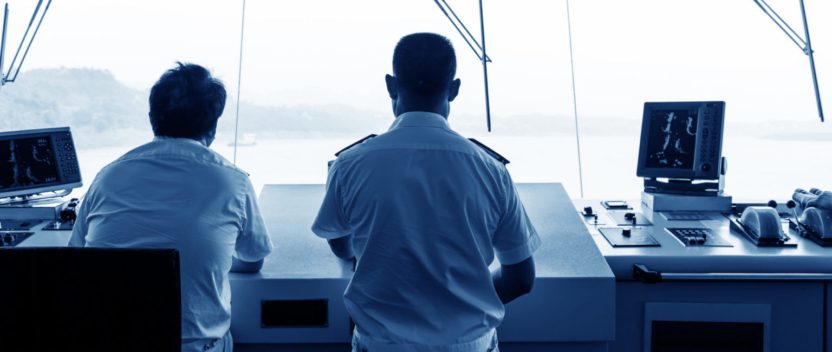Just in time for safety?
10 years after the collapse of Lehman Brothers the financial sector is engaging in a bout of introspection and self-analysis. Why the collapse happened is not in much doubt; whether it could happen again, when and how bad the effects would be are very much open to question.
The new connectedness of the global economy heightens the level of risk from contagion while the comparatively recent threat of malicious hacking make for a new business line but also a nervous mood.
With the US economy and the oil price both on a buoyant upward trend and other indicators apparently flashing green, the feeling is that even if disaster could strike again, the chances of it happening are receding.
Something similar appears to be happening in the shipping industry and in particular the business of managing physical risks according to the International Union of Marine Insurance, which has just held its annual meeting. Despite some slightly better news on premium levels, the structural warnings have been stark for anyone who would listen.
After decades of loss-making underwriting, an improvement in income comes against a warning of an increasing mismatch between premiums, covered risk and the cost of claims. On a global average basis, IUMI warns, the buffers needed to cover extraordinary single or accumulation losses are non-existent.
Overall premium income in 2017 recorded a 2% increase compared with 2016, an upswing largely attributable to growth in trade plus strengthening of European and other currencies against the US dollar. But this minor improvement masks the dramatic situation which is unfolding when current premium levels are viewed in relation to covered risks and the impact of claims.
In the cargo insurance market, IUMI reported the recent effects of unprecedented natural catastrophe and other ‘outlier’ event losses, which have negatively impacted underwriting results. It also demonstrates the increasing, and often unknown, accumulation of risk values both on shore and at sea since an increasing proportion of cargo premiums are associated with stock exposure rather than transit exposure.
In the hull market, IUMI’s warning is even starker. Falling vessel values it says, have together with other market conditions, contributed to an erosion of income to a degree where income is now not sufficient to allow for normal repair costs in a given year.
This downward trend is particularly worrying given the relative absence of major hull losses in recent years. The last 10 years’ statistics clearly show an increasing volatility in the impact of claims on underwriting results caused by the random occurrence of claims with unprecedented cost.
Whilst the global fleet continues to grow in numbers and in average vessel sizes, the average insured values have reduced year-on-year since 2008. This, together with depressed freight rates, is affecting overall premium income.
While 2017 saw a slight rally in vessel values in the bulk market and 2018 is likely to see values increase for the offshore fleet, in the main, IUMI’s figures show an increasing mismatch between fleet growth and premium income.
As vessel sizes continue to increase and new, more risky trading areas such as polar waters are exploited, this trend will continue and the heightened risk must be taken into account. The shipping and insurance industries will have to embrace this level of volatility and uncertainty which may impact future profitability.
There continues to be a long-term downward trend in the frequency of hull claims in general and for total losses specifically and IUMI reckons the frequency of total losses could have reached its possible minimum with a recent fluctuation between 0.05-0.1%.
However the reduction in vessel values increases the probability of constructive total losses as the cost of repair is more likely to exceed an accepted percentage of the reduced vessel value.
Major losses have not significantly impacted the sector for some years, but as the annual statistics released by The Nordic Association of Marine Insurers in April 2018 illustrate, the most costly 1% of all claims account for a minimum of 30% of the total claims cost in any given year.
In short, despite a generally benign claims environment, the rise in loss ratios clearly shows an increasing gap between a declining income and expected claims cost, even without the impact of costly major losses. This is a significant cause for concern.
The risks that flow from a one-off, large scale casualty event could easily wipe out any hull insurer’s profitability such is the compound effect – though whether owners appreciate the scale and degree of this risk is unclear.
Perhaps the comparison to Lehman Brothers is unfair, since a large scale casualty would not by itself cause the meltdown of the entire marine insurance industry, but there are threads that need to be unpicked to be understood.
The first is that if owners really lack sufficient cashflow to repair their ships then the risk of a major incident that triggers a bankruptcy and possibly the bail-out of an insurance provider must be considered genuine.
The second is that in an industry where statutory bodies exist to enforce the safety standards set by IMO, is there a risk that the shipping industry has not recognised the potential impact of a major casualty on land or at sea not just to human life, property or the environment but to business sustainability?
The last is that in a year in which there not been an extraordinary level of losses but the loss ratio for hull insurers has continued to increase, then the conclusion must be drawn that current income level does not even cater for a normal loss year. The price charged is not adequate for the risk.
In the understated language of the insurance market, that would be a grave concern indeed.
For further reading visit: https://iumi2018.com/documents/


